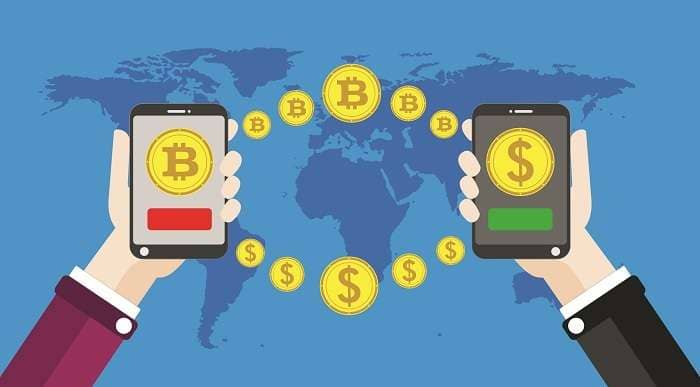What is a stablecoin and how it works
Содержание
When you earn interest on volatile cryptocurrency, there is always the risk that price volatility will offset the interest earned. Add to this that many cryptocurrency interest platforms require lock-up periods, during which the user cannot access their funds. Though built on the same underlying blockchain technology as more volatile assets like Bitcoin, stablecoins can represent a consistent store of value. Learn what makes decentralized finance apps work and how they compare to traditional financial products. Conversely, when UST was trading below its 1-dollar peg, the incentive was for market participants to burn it in exchange for 1 dollar worth of LUNA. In this scenario, the reduced supply of UST would lead to a rise in its price.
- Notably, it is a subsidiary of the cryptocurrency exchange, Bitfinex, registered in the British Virgin Islands.
- Unfortunately, there are many examples of such stablecoins that have failed spectacularly, resulting in a total loss of funds for the people left holding them.
- As with any new paradigm, though, there are dozens of competing stablecoin offerings on the market today.
- Every unit of a stablecoin is backed by an equivalent amount of assets in its reserve.
- Its popularity in recent years may be due to CENTRE’s efforts to provide transparency into its holdings.
- Investors holding cryptocurrencies for long-term appreciation don’t want to become famous for paying 10,000 Bitcoins for two pizzas.
A stablecoin’s value remains stable because it is theoretically 100% collateralized by underlying assets. This means that for every USDC issued, there should be the equivalent of $1 in reserve within the CENTRE network. There’s yet another reason why Dai is so appealing — its relative openness. Because Dai is a smart contract that lives on the Ethereum blockchain, it is extremely transparent.
Usdt
Adam Hayes, Ph.D., CFA, is a financial writer with 15+ years Wall Street experience as a derivatives trader. Besides his extensive derivative trading expertise, Adam is an expert in economics and behavioral finance. Adam received his master’s in economics from The New School for Social Research and his Ph.D. from the University of Wisconsin-Madison in sociology. He is https://xcritical.com/ a CFA charterholder as well as holding FINRA Series 7, 55 & 63 licenses. He currently researches and teaches economic sociology and the social studies of finance at the Hebrew University in Jerusalem. According to data compiled by Flipside Crypto, USDT’s prominence in DeFi primarily comes from Asian markets, while USDC usage is higher during western trading hours.
Algorithmic stablecoin issuers can’t fall back on such advantages in a crisis. The price of the TerraUSD algorithmic stablecoin plunged more than 60% on May 11, 2022, vaporizing its peg to the U.S. dollar, as the price of the related Luna token used to peg Terra slumped more than 80% overnight. Though Bitcoin remains the most popular cryptocurrency, it tends to suffer from high volatility in its price, or exchange rate. For instance, Bitcoin’s price rose from an intraday low barely above $4,000 in March 2020 to nearly $65,000 in April 2021 only to plunge almost 50% over the next two months. Intraday swings can also be wild; the cryptocurrency often moves more than 10% in the span of a few hours.
Binance USD is worth mentioning because Binance is one of the largest and most influential cryptocurrency exchanges today. Even though BUSD may sound like it is Binance-operated, it is actually issued by Paxos. This allows Binance to claim regulatory compliance in the US, even though the exchange is actually based elsewhere. Unlike the other stablecoins on this list, Paxos Gold is not pegged to the US dollar or some other fiat currency. Instead, one unit of the PAXG stablecoin represents one fine troy ounce of an investment-grade gold bar. These are stored in bullion vaults in the US, and owners of the token can technically claim ownership over them.
A USD-backed stablecoin token, for instance, would trade at a constant $1. DAI is a decentralized stablecoin that uses collateralized debt positions. Instead, DAI is created, or ‘minted,’ by individuals using the MakerDAO platform, which is a decentralized lending platform on the Ethereum network. People deposit collateral in the MakerDAO platform, giving them the ability to mint a certain amount of DAI. In later generations of decentralized stablecoins, a wide array of programmatic mechanisms are used to retain the peg.
Earning Interest With Usdc
Stablecoins pursue price stability by maintaining reserve assets as collateral or through algorithmic formulas that are supposed to control supply. With PAXG, you can digitally own a fraction of a gold bar, which means you transfer it within minutes like any other cryptocurrency token. This kind of portability is not possible with a Gold ETF, or other forms of physical or digital Gold.
Instead, its reserves are composed entirely of other cryptocurrency assets. TerraUSD was a decentralized stablecoin that deployed a more complex method for retaining the peg. The incentive was enabled by the relationship that UST maintained with the LUNA token, which is the other token in the two-token seigniorage model.
Stablecoins are more useful than more volatile cryptocurrencies as a medium of exchange. Stablecoins are cryptocurrencies that attempt to peg their market value to some external reference. Julius Mansa is a CFO consultant, finance and accounting professor, investor, and U.S. Department of State Fulbright research awardee in the field of financial technology.

Indeed, looking at metrics from DeFi Pulse, USDT and USDC trade blows with a mere 20% difference in usage. Learn about Ethereum’s attempt to solve the blockchain trilemma with a move to Proof of Stake, sharding, and more. Stablecoins continue to come under scrutiny by regulators, given the rapid growth of the $130 billion market and its potential to affect the broader financial system.
Busd, Ust, Dai , Usdp, Usdt, Gusd Vs Usdc
Proponents believe stablecoins could become widely used by households and businesses as a means of payment. If well-designed and appropriately regulated, stablecoins could support faster, more efficient, and more inclusive payments options. Deposit your stablecoins in a centralized crypto “bank.” With this method, you hand over custody of your stablecoins to a centralized platform, which invests them on your behalf. In some cases you’ll lock up your stablecoins for defined terms, in other cases there are no lockups but in general you’ll need to pay fees to withdraw your stablecoins from the platform. On the whole, the interest you can earn via this method is lower than via decentralized methods due to the overhead costs incurred by the centralized third party managing the system.
If doubts arise over the stablecoin’s reserve, it could quickly lose its peg. Whether you’re looking to use a stablecoin for everyday payments or as a convenient way to transfer money online, here are your top options and why you should or shouldn’t use each one. 1 USDC is typically equal to $1 USD as it is a U.S. dollar-pegged stablecoin. As a result, USD Coin is now available on eight different blockchains and is supported by a growing number of non-custodial wallets and protocols. Behind the scenes, Gelt High-Yield Savings automatically converts U.S. dollar deposits into USDC, then adds the funds to DeFi protocols wherein they earn 3–8% interest per year. USD Coin is a stablecoin with a wide variety of applications within decentralized protocols.
Stablecoins: What they are and how they can help secure your money – Vanguard
Stablecoins: What they are and how they can help secure your money.
Posted: Thu, 18 Aug 2022 07:03:00 GMT [source]
As the title suggests here, Gemini Dollar is backed by the cryptocurrency exchange Gemini. You can consider GUSD a direct competitor to USDC — they’re both operated by American companies and boast regulatory compliance as one of their key features. These are conducted by a third party as well, so there’s some accountability at play. Of course, digital currencies such as Bitcoin may someday become prolific enough to be universally accepted — regardless of their value in USD terms. For now, though, most people will probably want to use stablecoins simply because they offer the convenience of using a cryptocurrency, but minus the negative aspects such as price speculation and volatility.
How Usd Coin Differs From Other Stablecoins
As for which one you should choose, the answer’s pretty straightforward — whichever one works for your use case. Failure to act risks growth of payment stablecoins without adequate protection for users, the financial system, and the broader economy. If this is not the case, a stablecoin can ‘lose its peg’ to its underlying asset; In other words, 1 token would no longer equal $1.
Though stablecoins aren’t suitable for speculation, due to their stability, here are a few of the top reasons why they’re more prevalent than ever. Perhaps the most significant problem facing wider cryptocurrency adoption is volatility. Understand the basics of Decentralized Applications on decentralized networks; their features and their current limitations. Investopedia requires writers to use primary sources to support their work. These include white papers, government data, original reporting, and interviews with industry experts. We also reference original research from other reputable publishers where appropriate.
Top Stablecoins By Market Capitalization
You can also swap another stablecoin for it via mStable, a stablecoin swap ecosystem. Leading decentralized lending platforms issue what are called over-collateralized loans, meaning that the borrower must lock up more than 100% of their loan value in order to qualify for a loan in the first place. In some ways that’s not so different from central banks, which also don’t rely on a reserve asset to keep the value of the currency they issue stable. Such reserves are maintained by independent custodians and are regularly audited. Tether and TrueUSD are popular stablecoins backed by U.S. dollar reserves and denominated at parity to the dollar. To serve as a medium of exchange, a currency that’s not legal tender must remain relatively stable, assuring those who accept it that it will retain purchasing power in the short term.
Fiat-collateralized stablecoins maintain a reserve of a fiat currency such as the U.S. dollar, as collateral assuring the stablecoin’s value. Other forms of collateral can include precious metals like gold or silver as well as commodities like crude oil, but most fiat-collateralized stablecoins What is a stablecoin and how it works have reserves of U.S. dollars. The term stablecoin refers to a distinct class of cryptocurrencies explicitly designed with price stability in mind. Unlike traditional cryptocurrencies like Bitcoin or Ethereum, stablecoins are linked to an existing asset, like US dollars, euros, or even gold.
Other Government Sites
Understand how the self-custodial model puts you in charge of your cryptoassets and protects you from third-party risk. Also, you can instantly trade any cryptocurrencies you hold for USDT, USDC, or other stablecoins. In October 2021, the International Organization of Securities Commissions said stablecoins should be regulated as financial market infrastructure alongside payment systems and clearinghouses. The proposed rules focus on stablecoins deemed systemically important by regulators, with the potential to disrupt payment and settlement transactions. Their primary distinction is the strategy of keeping the stablecoin’s value stable by controlling its supply through an algorithm, essentially a computer program running a preset formula.













